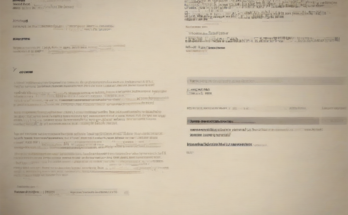Unveiling the Best Home Auto Insurance: A Comprehensive Guide to Finding the Perfect Coverage
Choosing the right home and auto insurance can feel overwhelming. With so many providers and policy options, finding the “best” fit for your individual needs requires careful consideration. This comprehensive guide will walk you through the essential factors to evaluate, empowering you to make an informed decision and secure the optimal protection for your home and vehicles.
Understanding Your Needs: A Personalized Approach
Before diving into specific providers, it’s crucial to assess your unique circumstances. Generic “best” lists often fail to account for individual variations in risk profiles, coverage requirements, and budget constraints.
- Assess Your Home’s Value: Accurate valuation is paramount for determining adequate dwelling coverage. Consider the replacement cost, not just the market value, as rebuilding can be significantly more expensive.
- Inventory Your Possessions: Create a detailed inventory of your belongings, including valuable items like jewelry, electronics, and artwork. This will help determine the appropriate personal property coverage.
- Evaluate Your Vehicles: Note the make, model, year, and value of each vehicle. Consider additional coverage options like collision and comprehensive, depending on the vehicle’s age and worth.
- Determine Your Liability Needs: Liability coverage protects you financially if you cause an accident. Consider your personal assets and potential liability exposure when determining the appropriate coverage limits.
- Review Your Driving History: Your driving record significantly influences your auto insurance premiums. A clean record will typically result in lower rates.
- Consider Additional Coverage: Explore optional coverages such as uninsured/underinsured motorist protection, medical payments coverage, and rental reimbursement.
- Set a Realistic Budget: Insurance is a significant expense, so setting a realistic budget beforehand is crucial. This will help narrow down your options and prevent sticker shock.
Key Factors to Compare Insurance Providers
Once you understand your insurance needs, you can start comparing providers. Focus on these key aspects:
- Coverage Options: Compare the breadth and depth of coverage offered by different providers. Pay close attention to policy limits and exclusions.
- Premiums: Obtain quotes from multiple insurers to compare premiums. Remember that the lowest premium isn’t always the best option if the coverage is inadequate.
- Deductibles: Understand the impact of your deductible on your premium. A higher deductible will typically result in lower premiums, but you’ll pay more out-of-pocket in the event of a claim.
- Customer Service: Read reviews and check ratings for customer service. A responsive and helpful insurer can be invaluable during a claim.
- Financial Stability: Choose an insurer with a strong financial rating. This ensures they’ll be able to pay out claims even during difficult economic times.
- Discounts: Many insurers offer discounts for various factors, such as bundling home and auto insurance, safe driving records, security systems, and multiple-car policies. Explore all available discounts to potentially lower your premiums.
- Claims Process: Investigate the insurer’s claims process. Look for companies with streamlined, transparent, and efficient claim handling procedures.
Exploring Different Insurance Types and Bundling Options
Understanding the various types of insurance and the benefits of bundling can significantly impact your overall cost and protection.
- Homeowners Insurance: This protects your home and belongings from various perils, including fire, theft, and weather damage. Different types of policies offer varying levels of coverage and protection.
- Renters Insurance: If you rent, renters insurance protects your personal belongings and provides liability coverage.
- Auto Insurance: This is legally mandated in most jurisdictions and covers liability, collision, comprehensive, and potentially other optional coverages.
- Bundling Home and Auto Insurance: Many insurers offer discounts for bundling home and auto insurance policies. This can be a significant cost savings compared to purchasing separate policies.
Navigating the Quoting Process: Tips for Success
Obtaining accurate quotes is crucial for comparison. Follow these steps to ensure you receive the most accurate information.
- Use Online Comparison Tools: Many websites allow you to compare quotes from multiple insurers simultaneously. This is a convenient way to get a quick overview of available options.
- Contact Insurers Directly: While online tools are helpful, contacting insurers directly allows for more detailed discussions and clarification of policy specifics.
- Provide Accurate Information: Accuracy is paramount when providing information for quotes. Inaccurate information can lead to incorrect pricing and potential complications later.
- Compare Apples to Apples: When comparing quotes, ensure you’re comparing similar coverage levels and deductibles. Slight variations in policy details can significantly impact the price.
- Don’t Be Afraid to Negotiate: In some cases, you may be able to negotiate a lower premium, especially if you have a clean driving record and have been with a previous insurer for an extended period.
Reading the Fine Print: Understanding Policy Details
Before committing to a policy, carefully review the policy documents. Pay close attention to the following:
- Coverage Limits: Understand the maximum amount the insurer will pay for each type of claim.
- Deductibles: Clearly understand your responsibility for out-of-pocket expenses before the insurer starts paying.
- Exclusions: Note any specific events or circumstances that are not covered by the policy.
- Policy Period: Understand the duration of your policy and when it renews.
- Cancellation Policy: Review the terms and conditions for canceling your policy.
Staying Informed and Adapting Your Coverage
Your insurance needs may change over time. Regularly review your policies to ensure they remain aligned with your current circumstances. Consider these factors:
- Life Changes: Major life events like marriage, having children, or purchasing a new home can impact your insurance needs.
- Asset Changes: Increased assets, such as acquiring valuable jewelry or upgrading your vehicle, may require adjustments to your coverage limits.
- Market Fluctuations: Changes in market values for your home and vehicles may necessitate coverage adjustments.
- Regular Reviews: Schedule annual reviews of your policies to ensure they are still adequately protecting your assets.
Finding the Best Home Auto Insurance: A Continuous Process
The quest for the “best” home and auto insurance is an ongoing process. By diligently assessing your needs, comparing providers, understanding policy details, and regularly reviewing your coverage, you can ensure you have the optimal protection for your valuable assets.

